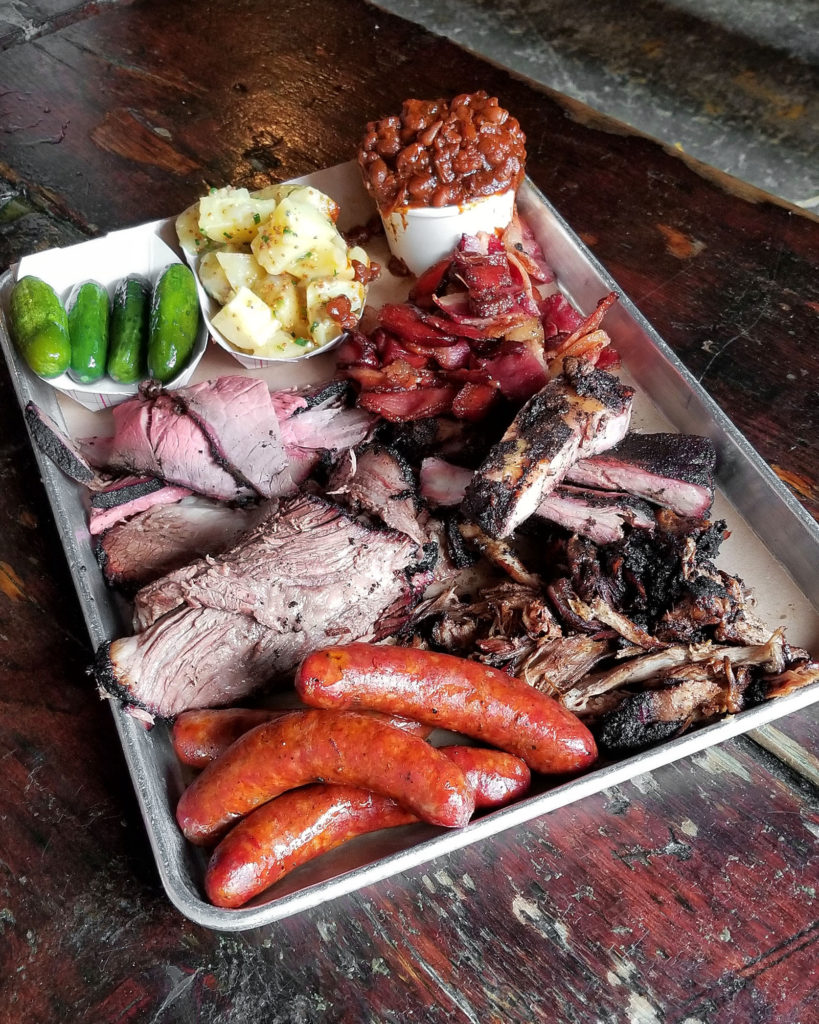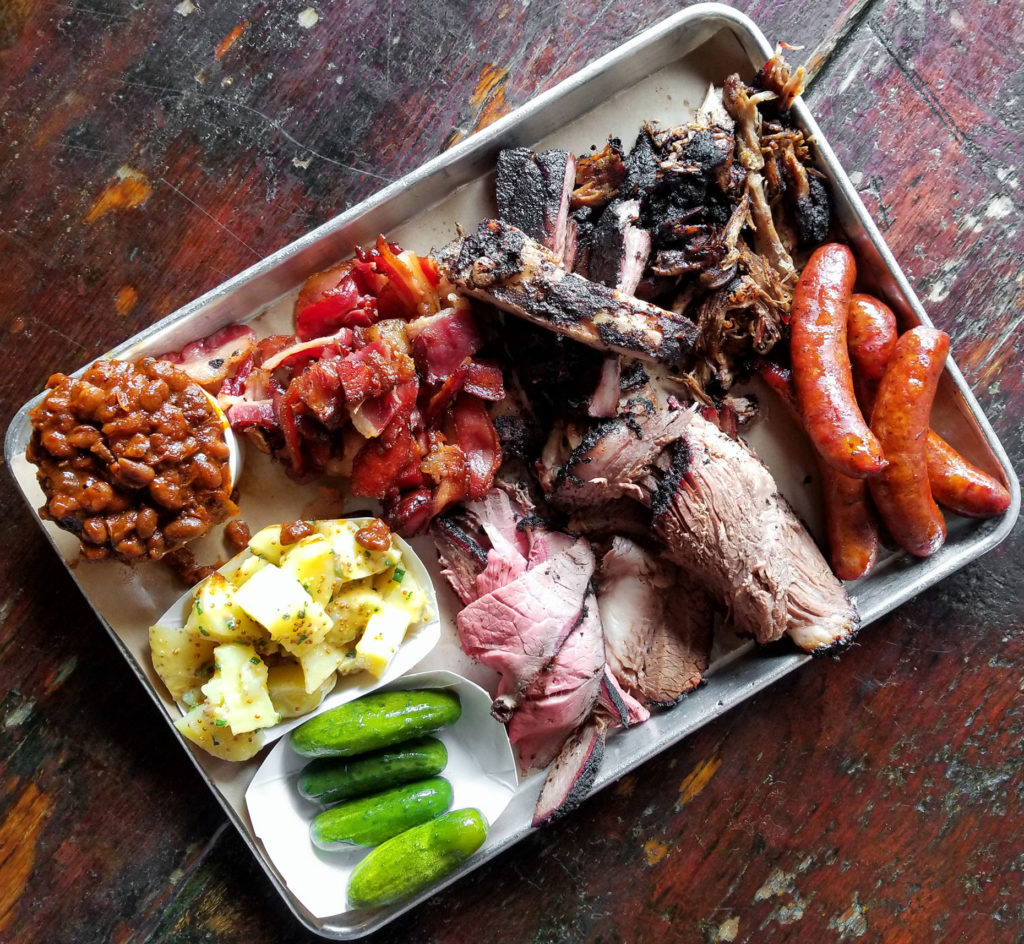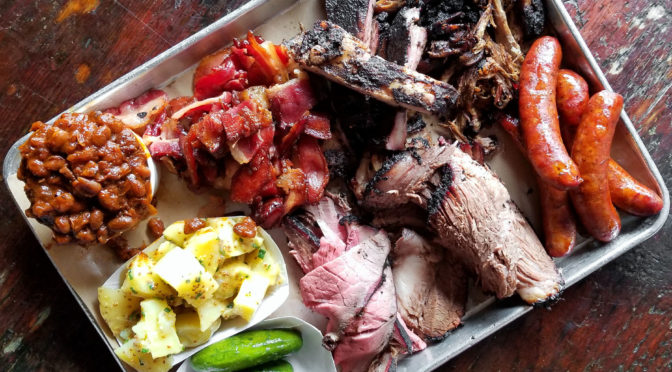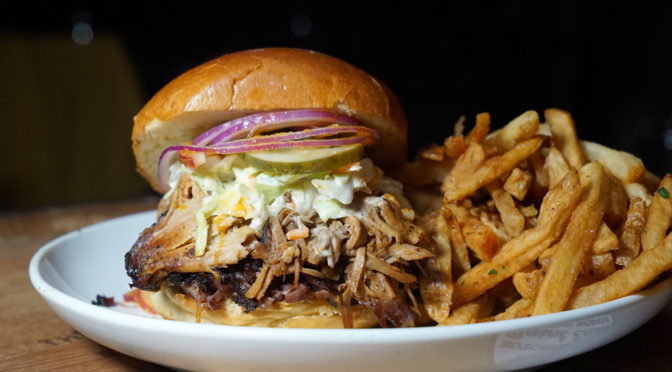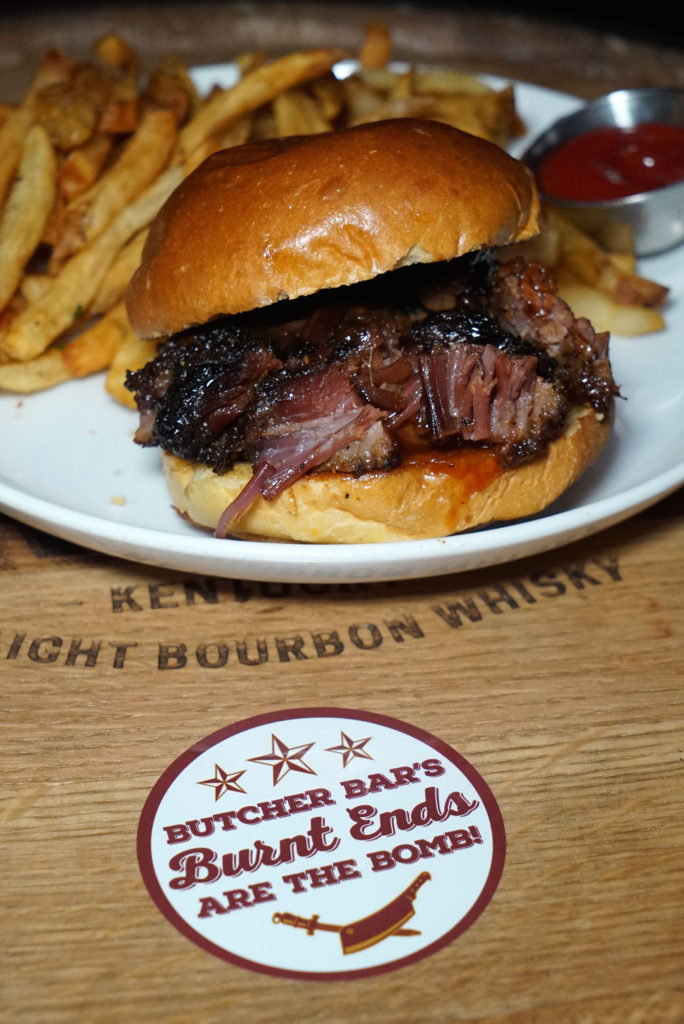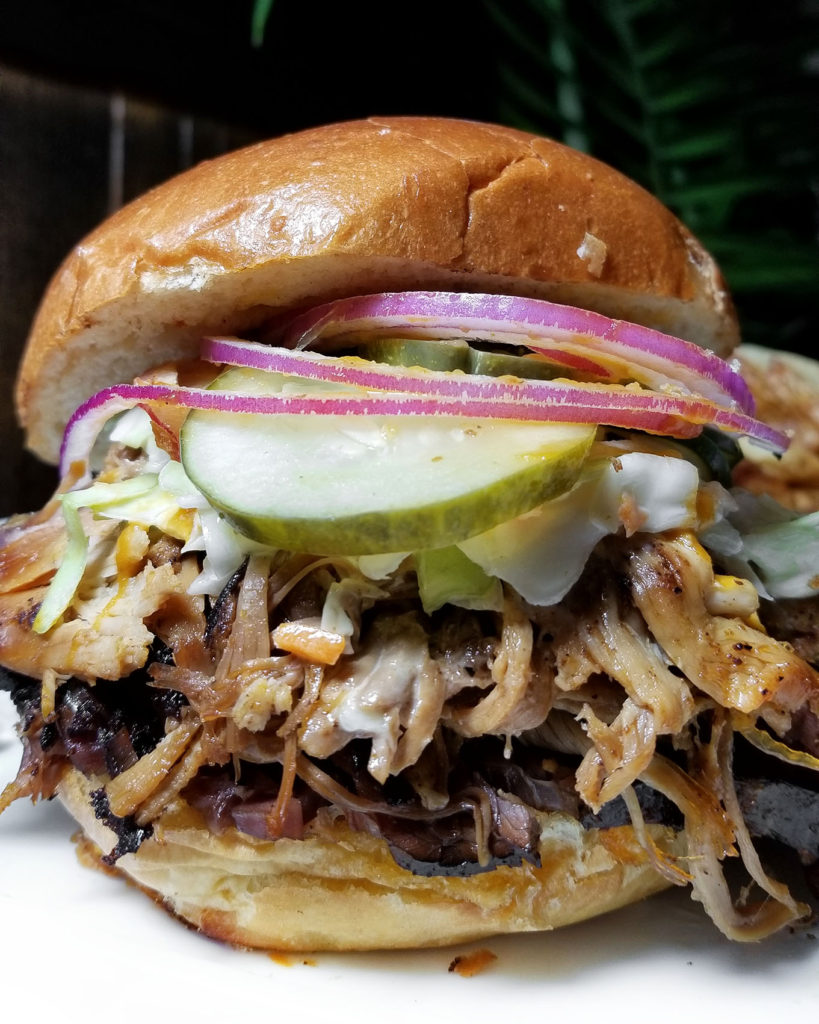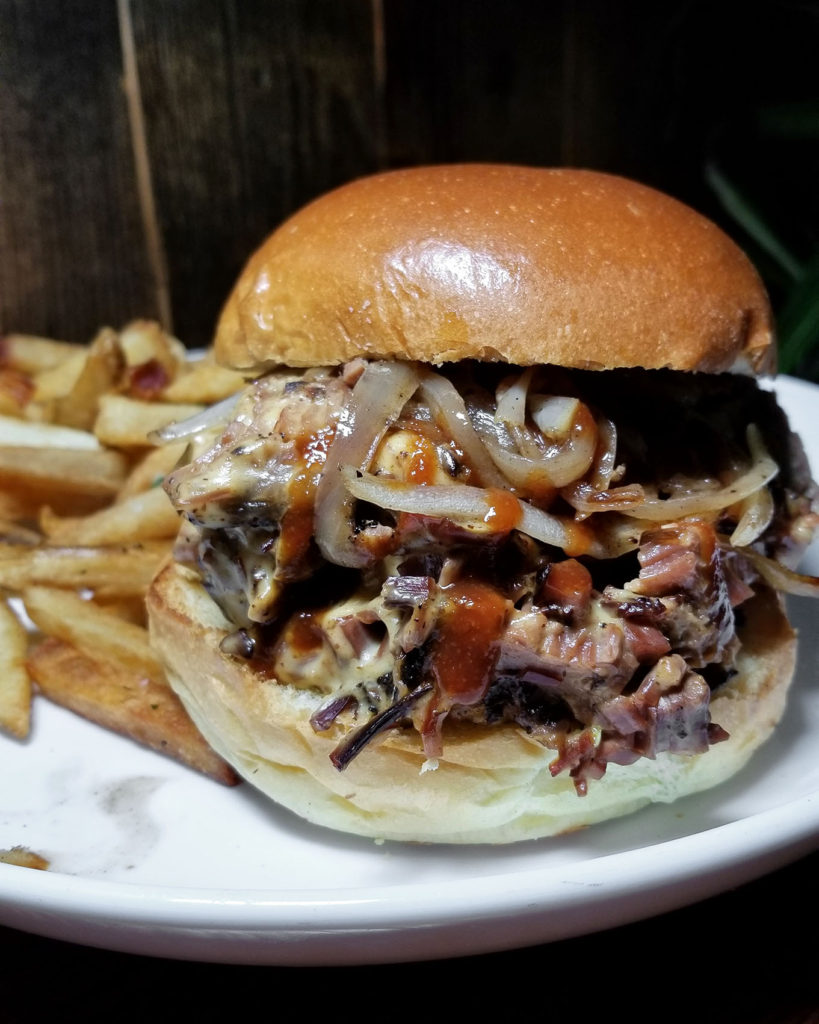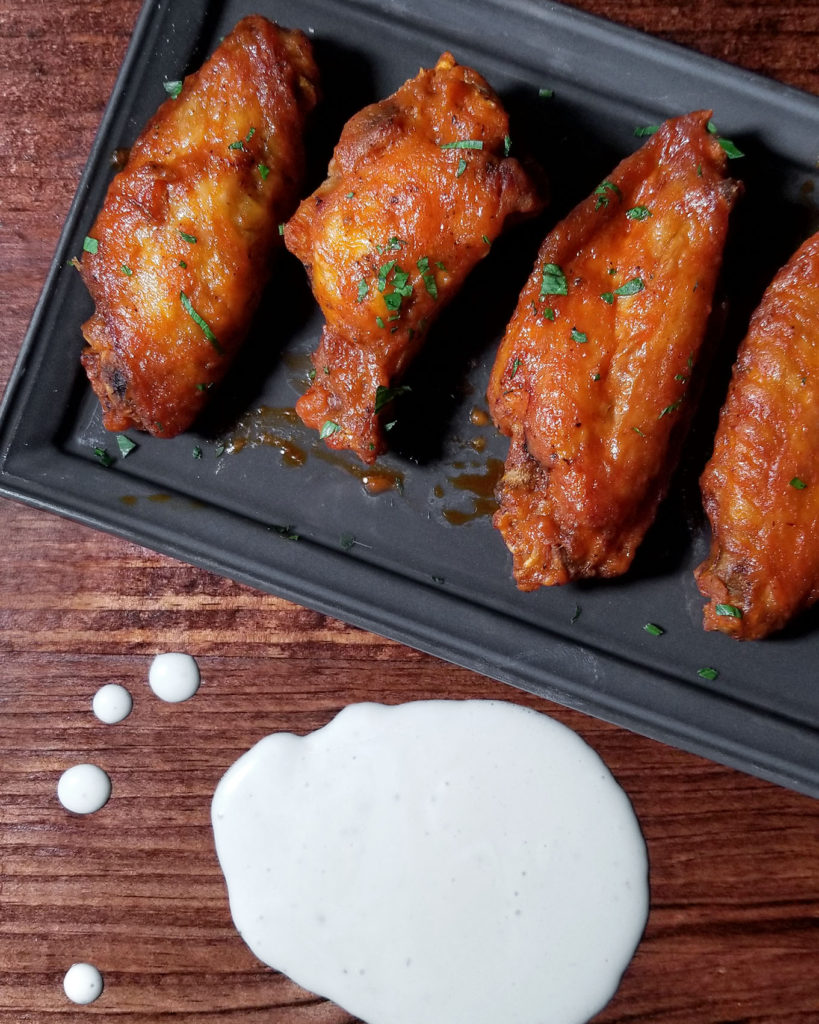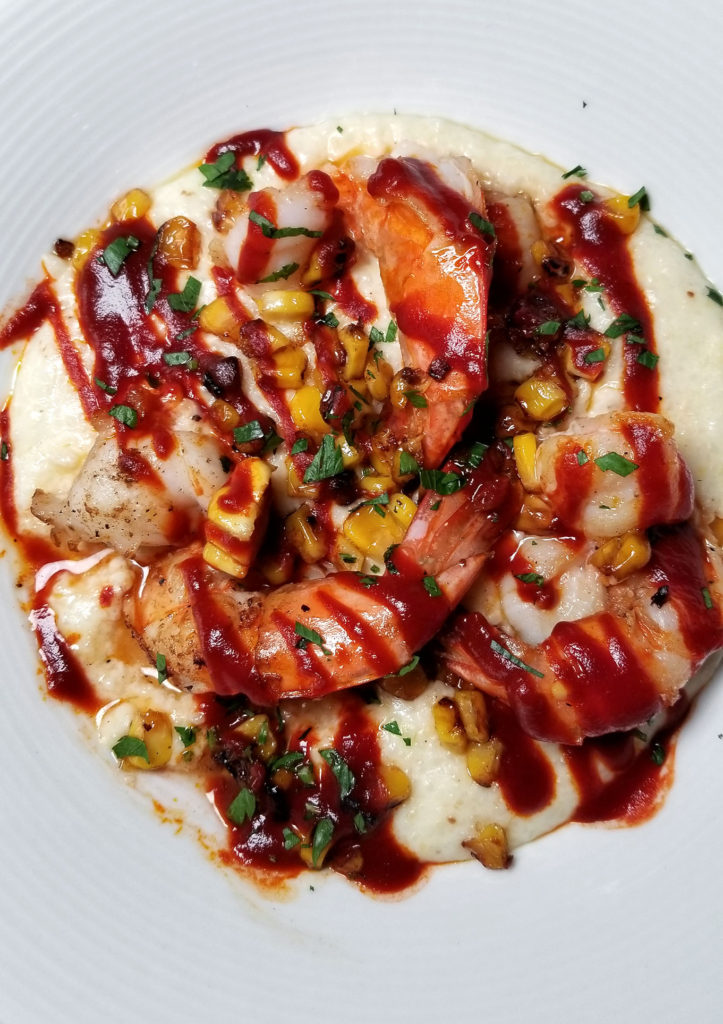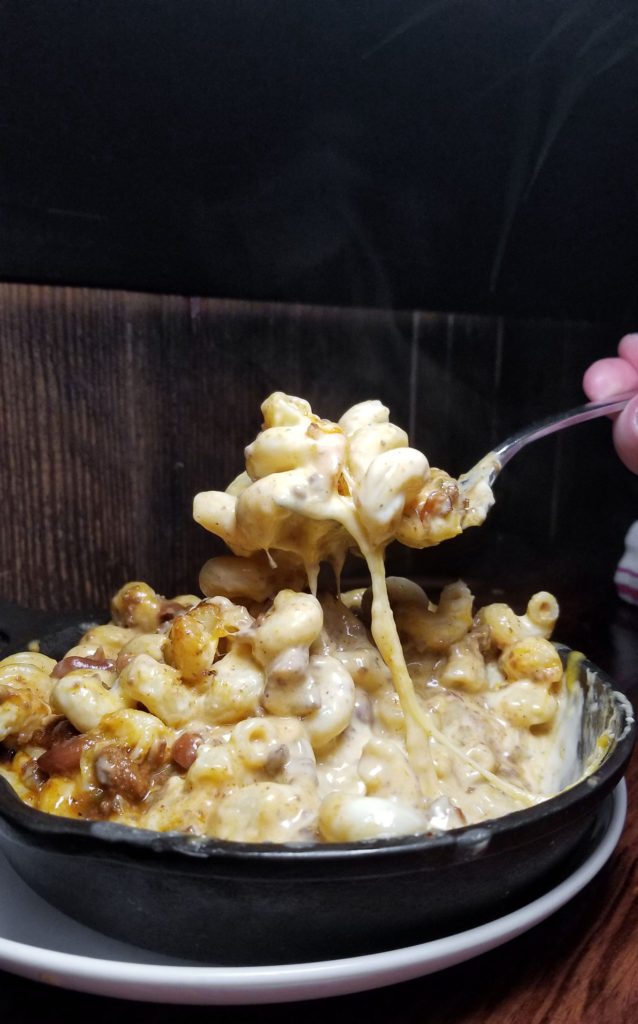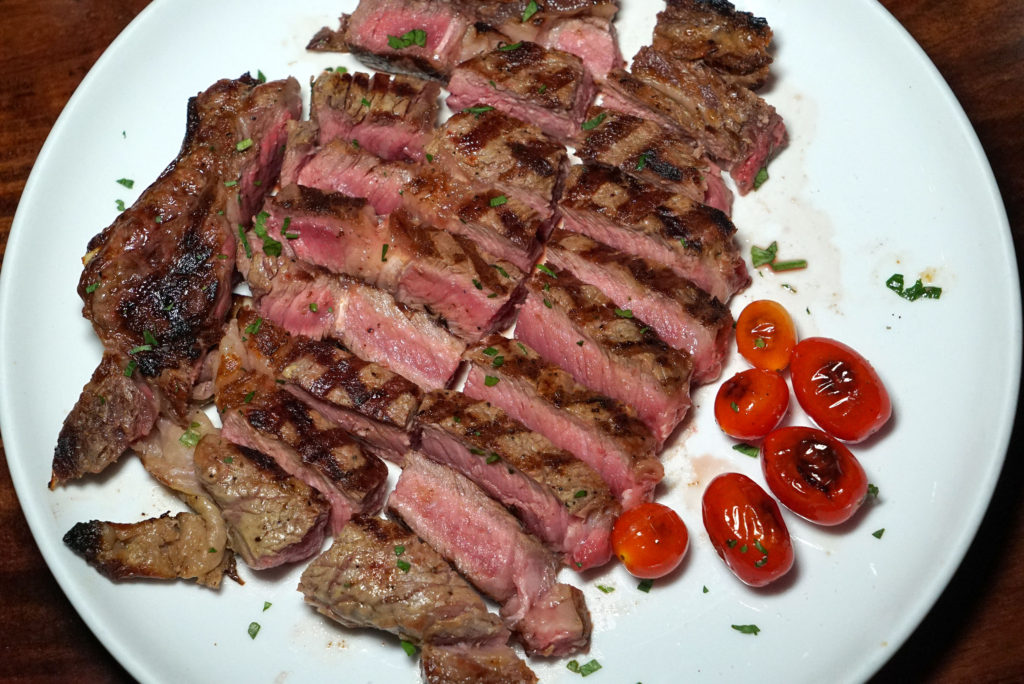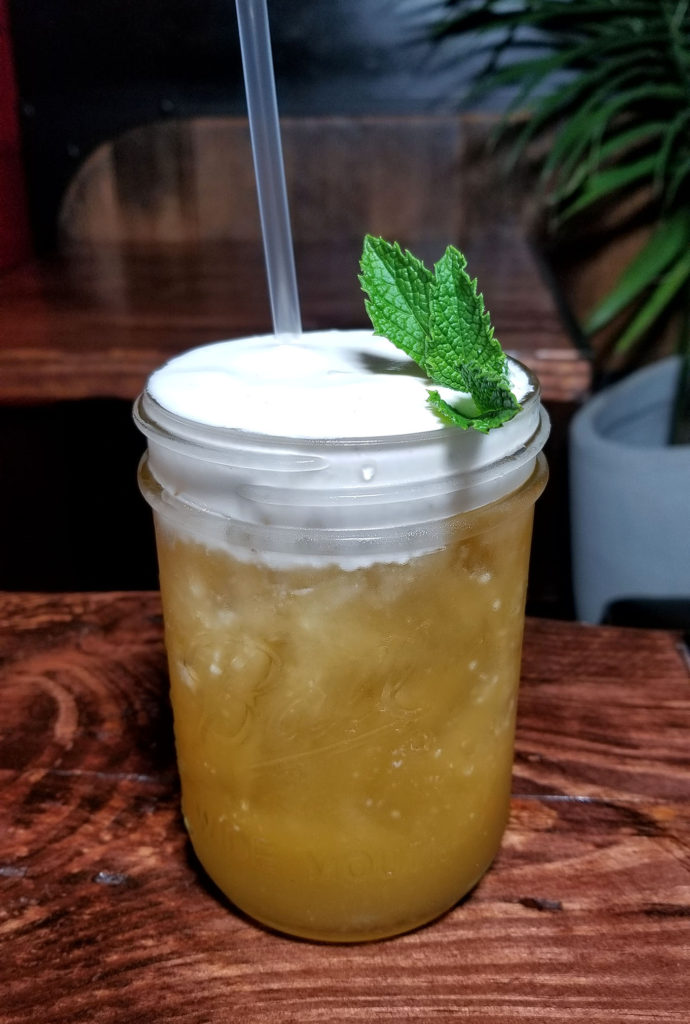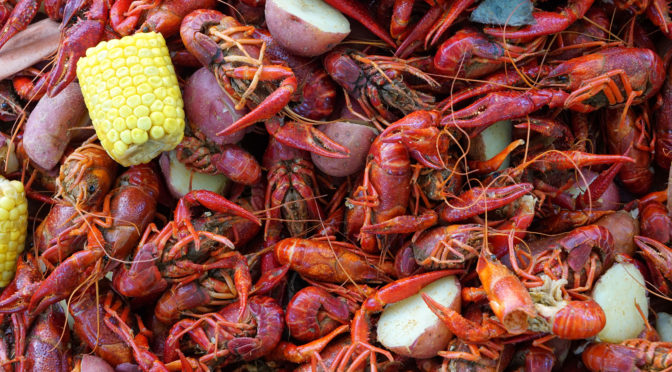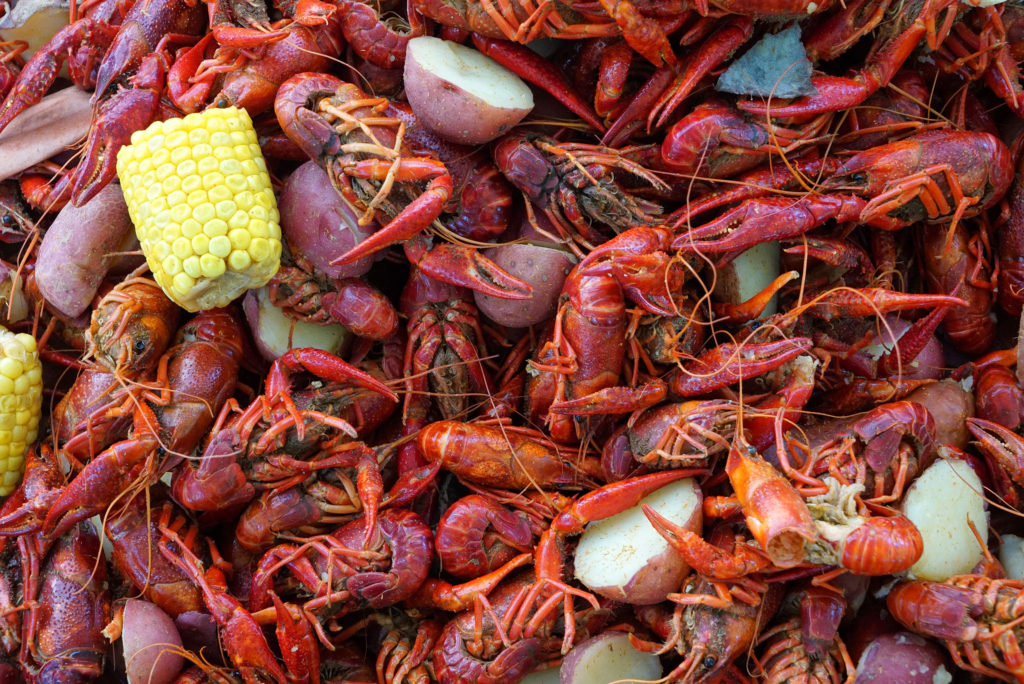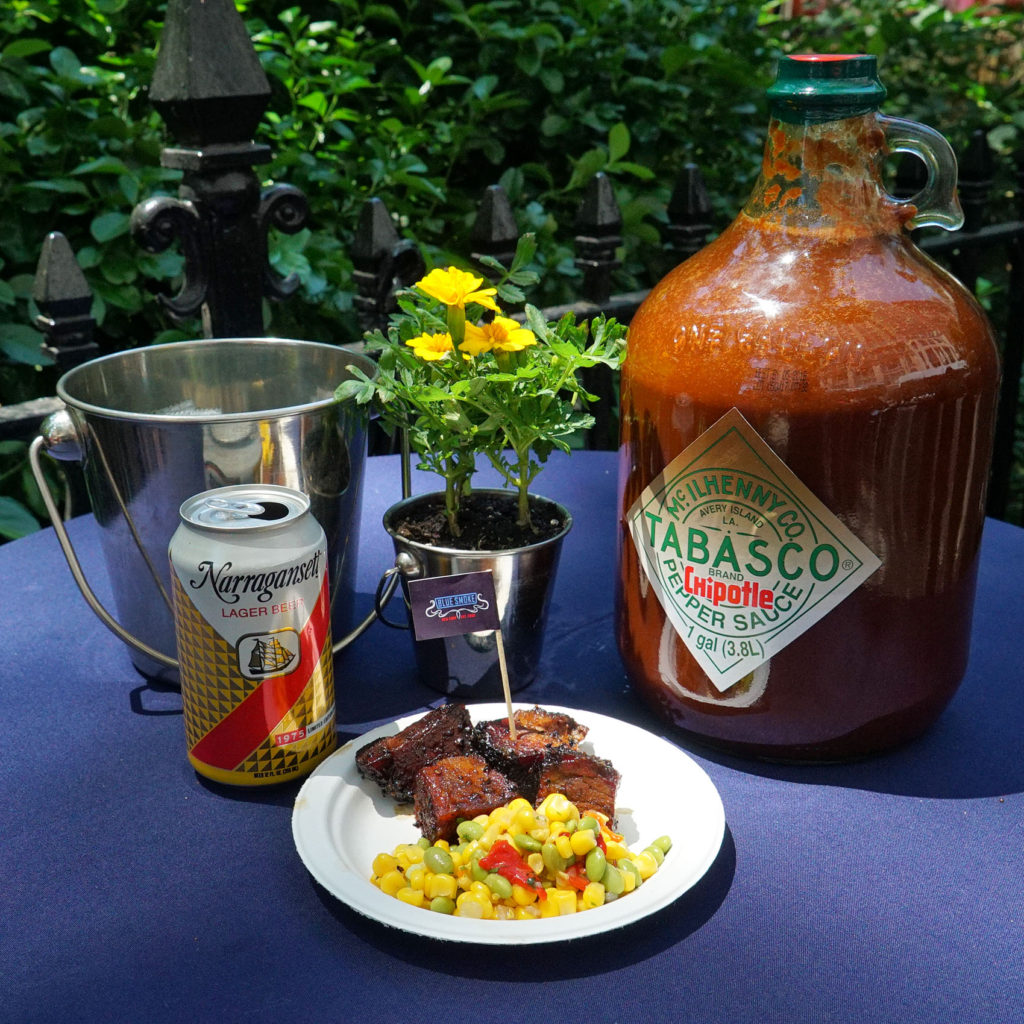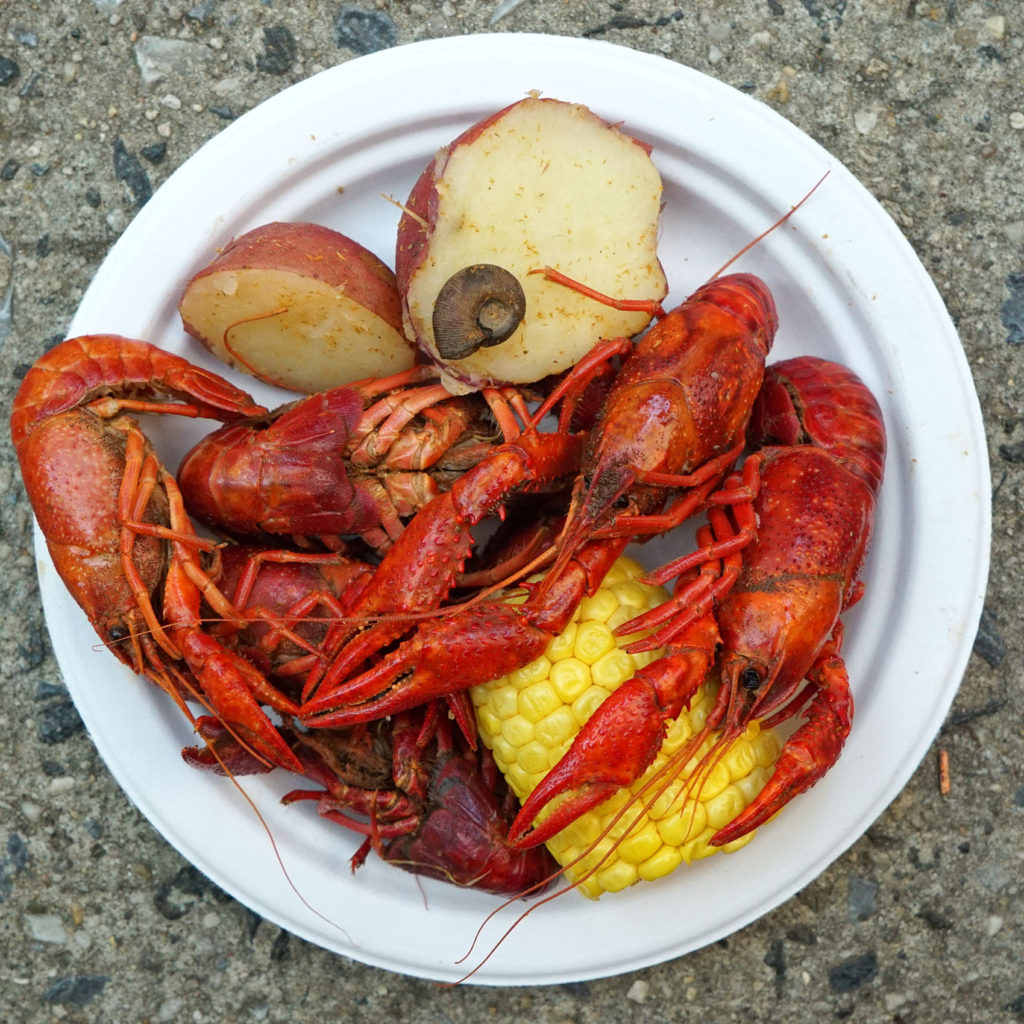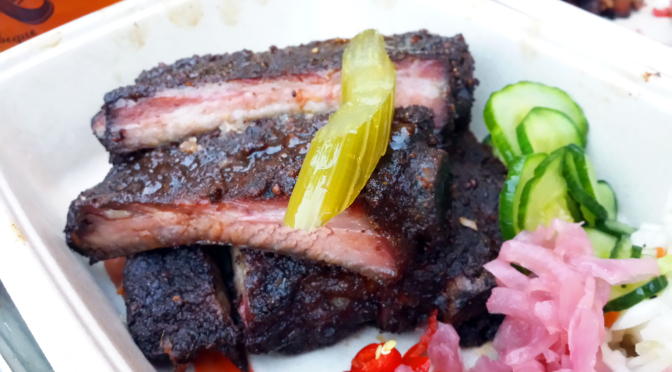In case you’re from a different planet, barbecue is a culinary technique that involves cooking meat for long periods of time at low temperatures with smoke from a wood fire. BBQ pits add a distinctive smoky taste to the meat.
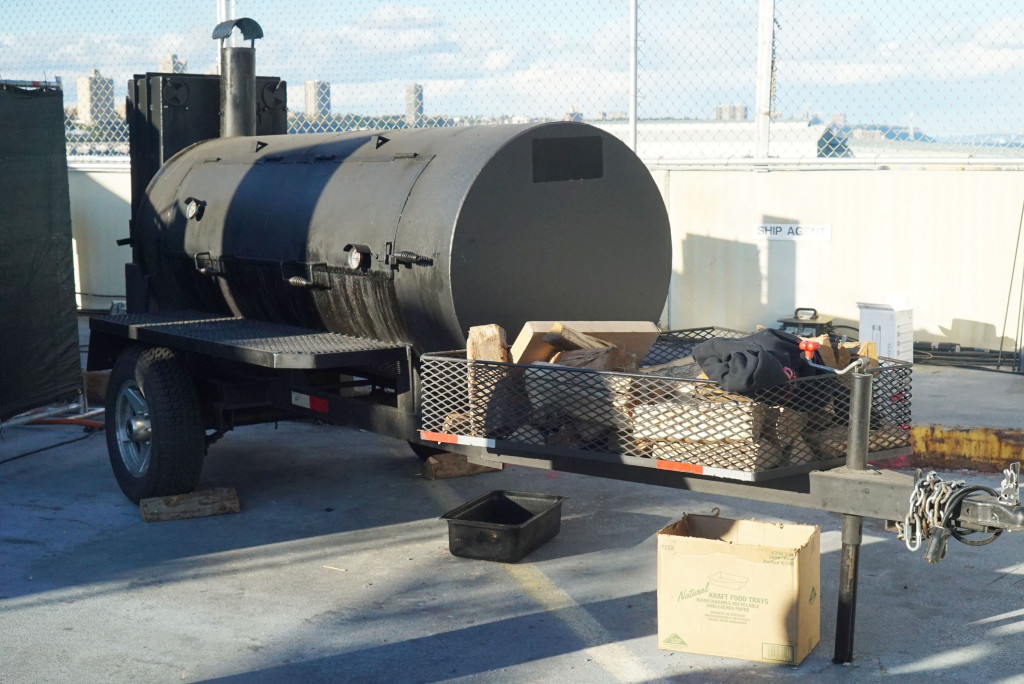
Clearly we’re not talking about what you do in your backyard on Memorial Day with your Weber propane grill. We’re not talking about slapping a piece of thin, raw beef onto a hot electric mesh of metal either.
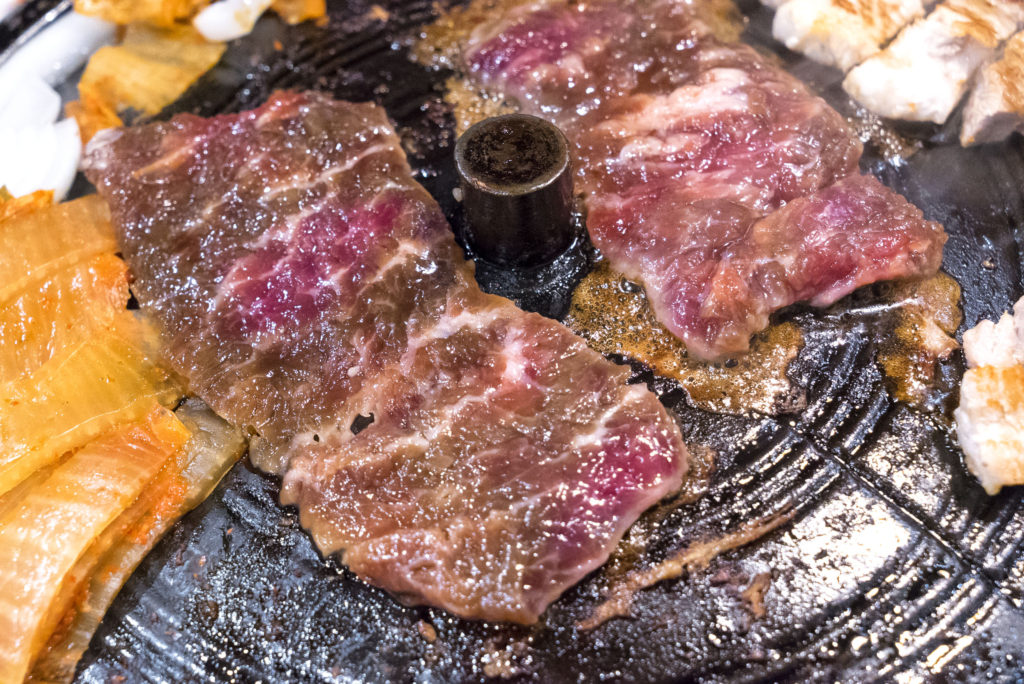
That’s GRILLING. Never confuse it with real deal BBQ, which involves smoking a massive carcass for days on end, and the low-and-slow roasting and/or constant basting and sauce-mopping of meats for hours and hours. No my friends. This is a whole different beast. Speaking of different beasts, there’s really no limit on what animals can be cooked in this style.
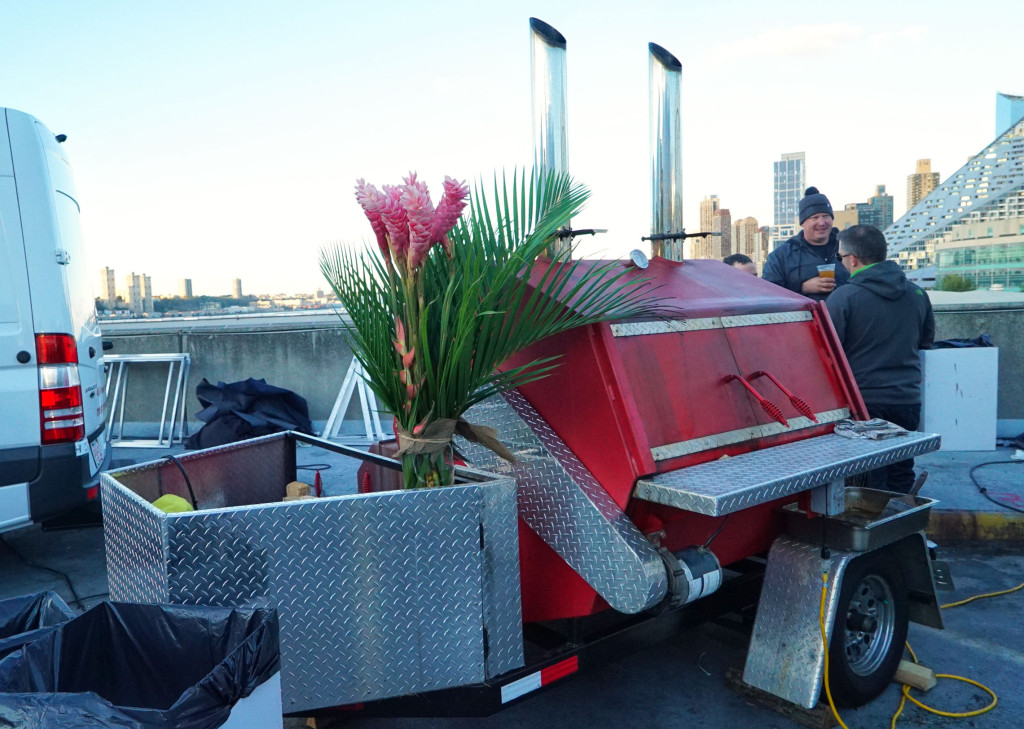
In the American south and midwest, however, barbecue has become more than just a cooking style. It’s a way of life, as is often said, and it varies greatly from place to place. Regions differ on things like sauce or no sauce, what type of animal or cuts of meat are used, and even what types of wood is burned. This page will serve as your guide to understanding these great varieties.
Texas
May as well start with the big one. Texas has regional styles within it’s own style. Central Texas “Hill Country” is known for its old meat markets, which were heavily influenced by German and Czech immigrants. Here, the focus is on the meat, so they use dry rubs (no sauce on the meat, or it is not a primary element to the food). Beef brisket and ribs are king, and sausage links are also prominent, with pecan and oak wood being used in most smokers. East Texas BBQ is pretty much split 50/50 between beef and pork, but, similar to southern styles, what you get is usually chopped rather than sliced, and served sandwich style with a tomato- and vinegar- based hot sauce.
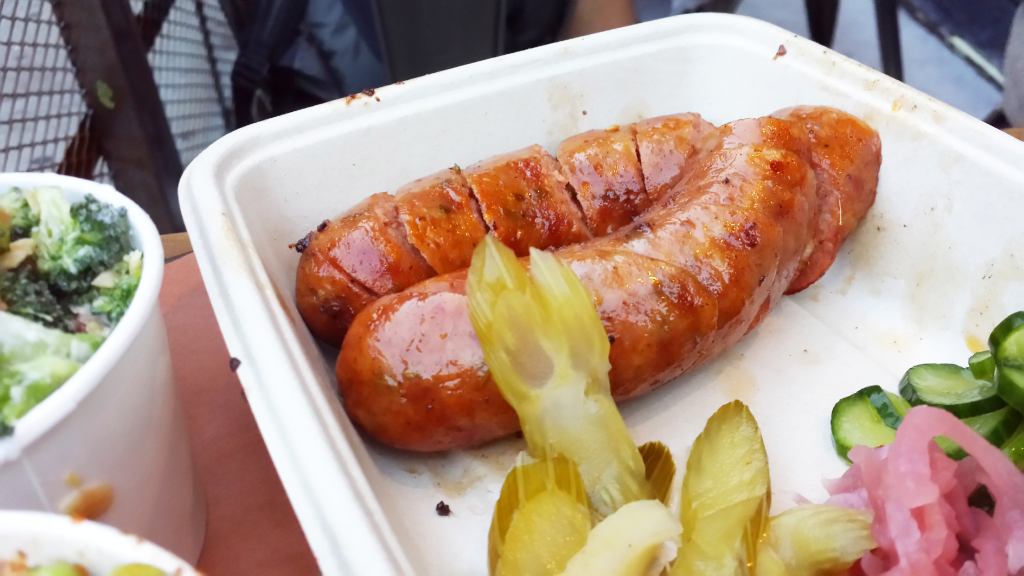
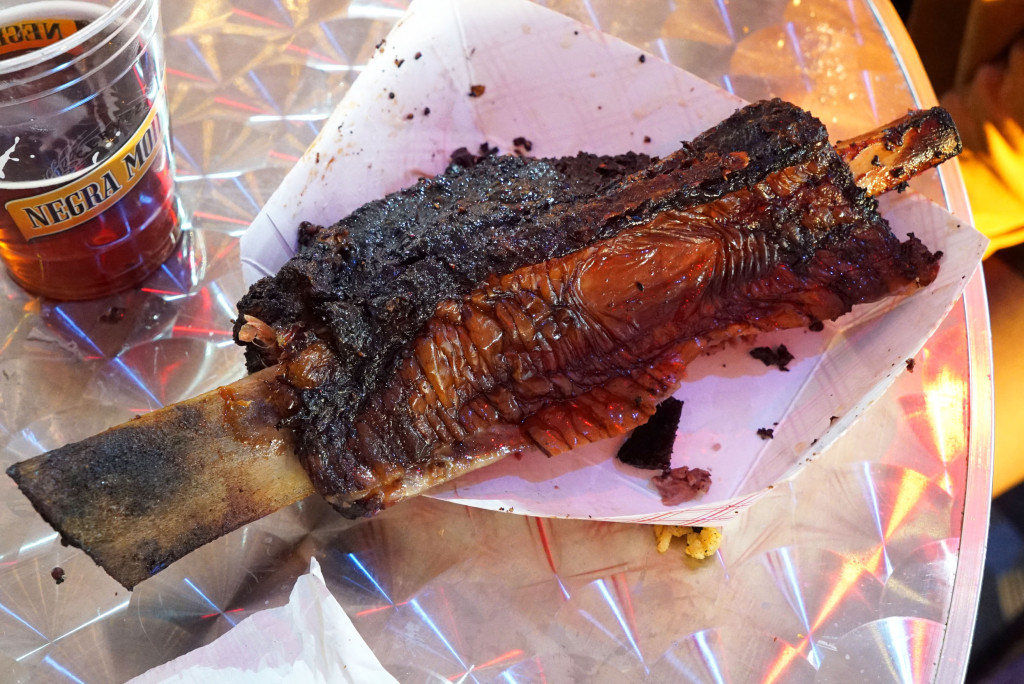
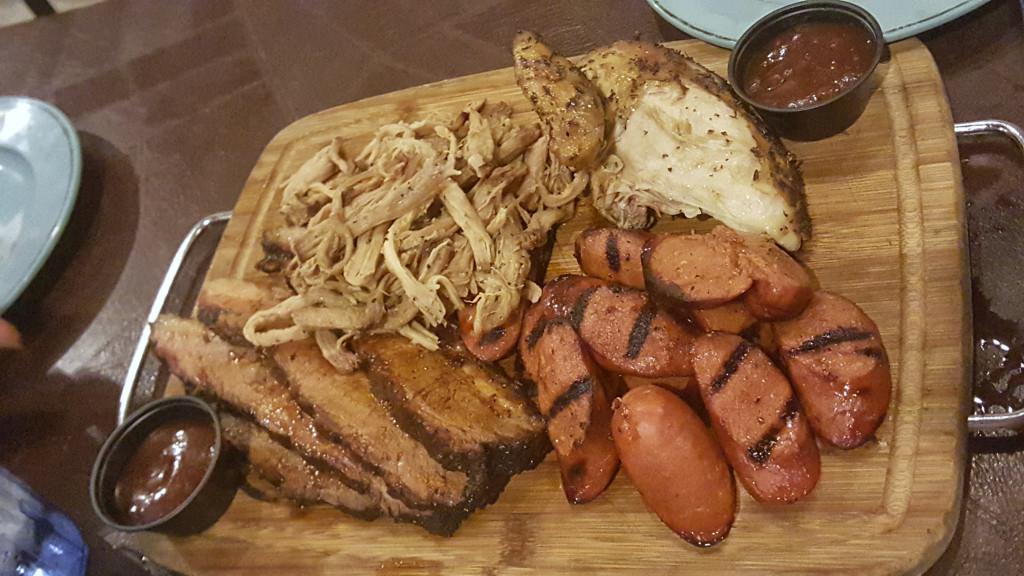
North Carolina
North Carolina, like Texas, has variations within: eastern style and Lexington style (not to be confused with Lexington Steele). Three unifying things you need to know about NC BBQ: (1) the meat is PORK all the way; (2) said pork should be brushed with a spice and vinegar mix while cooking; and (3) hickory or oak wood is used in the smoker. Two differentiating things you need to know about NC BBQ: (1) eastern NC is a whole-hog BBQ, using the entire animal, while Lexington favors just the pork shoulder and ribs; and (2) eastern style NC BBQ favors an apple cider vinegar-based sauce, while the west prefers a ketchup- and brown sugar- based sauce.
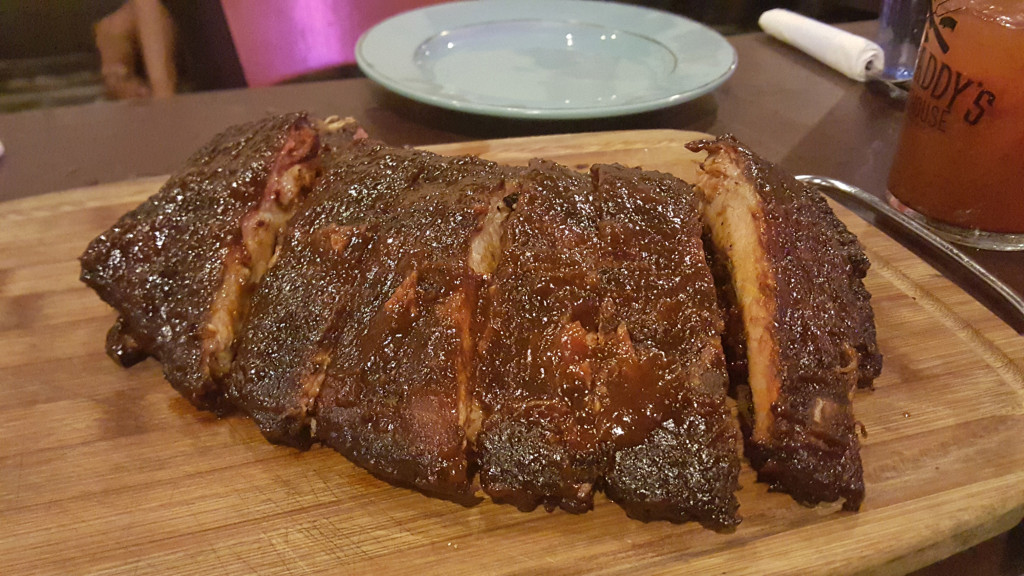
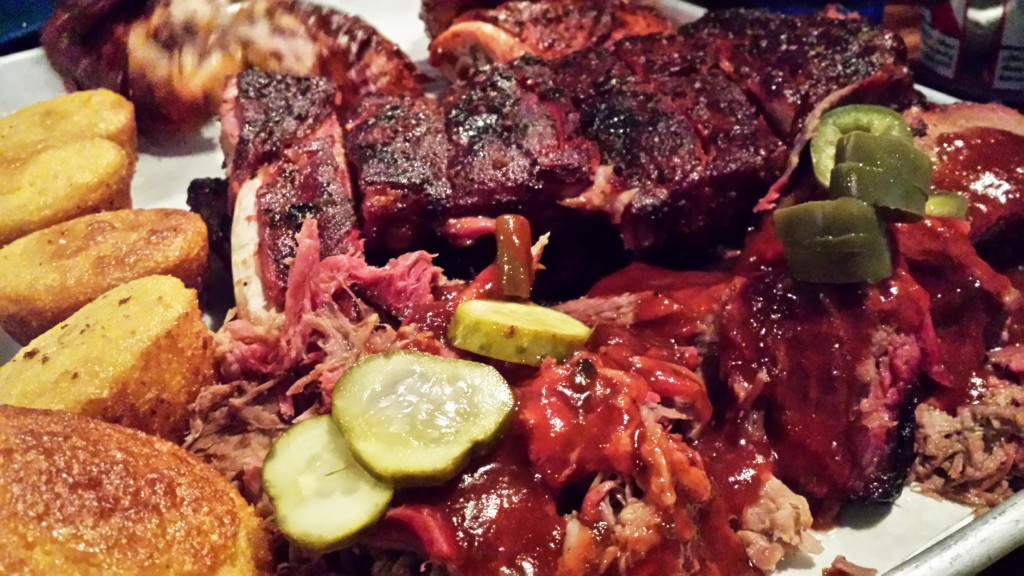
South Carolina
Here, it’s all about the sauce differences, otherwise it is pretty much the same as North Carolina. Central South Carolina is typically BBQ with a mustard-based sauce known as “Carolina Gold.” The coast is all about pepper and vinegar, and the far west and north are into ketchup- and tomato- based sauces. Preferred cuts/dishes across the state are pork butt and ham.
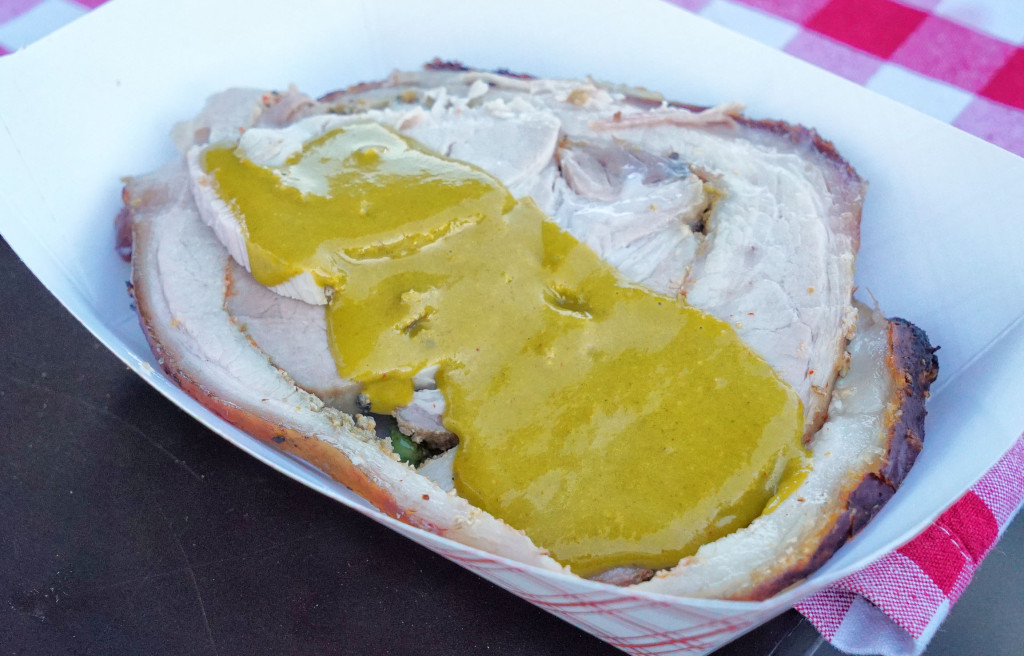
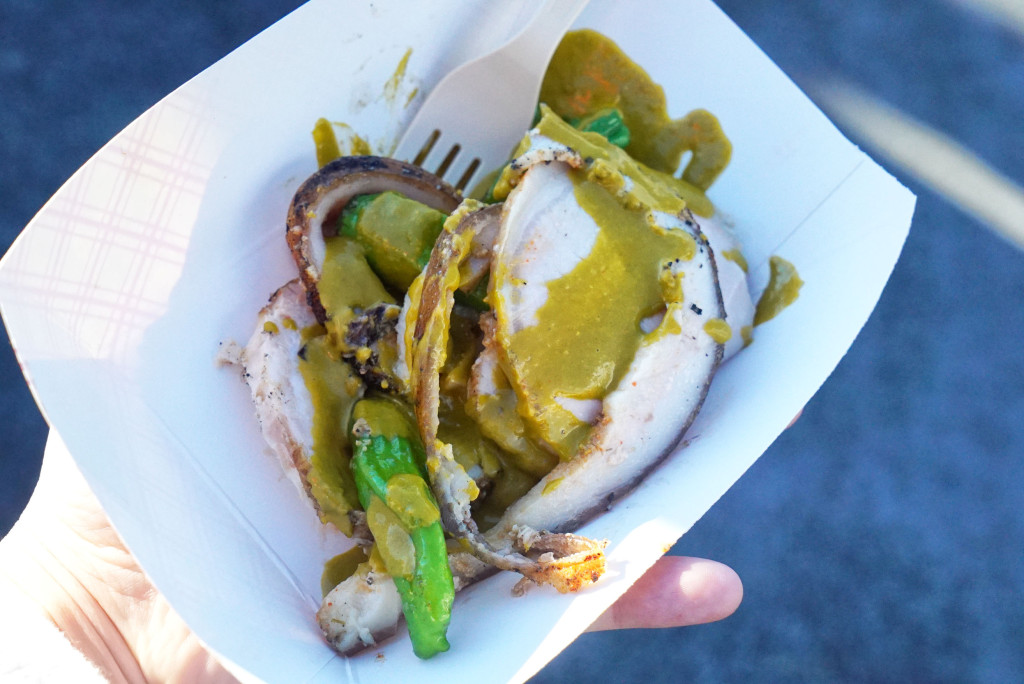
Kansas City
This info holds for both Kansas and Missouri versions of Kansas City, as they are neighbors. But because of its geographic location, KCBBQ has a mix of culinary influences from all regions. And given its history as a hub for the meatpacking industry, Kansas City style BBQ embraces all kinds of meats. Everything is done “slow and low,” as they say, and usually with hickory wood, although all woods are used. Burnt ends are big here, and smothered with a thick and sweet, molasses- and tomato- based sauce, because, well, in Kansas City, “sauce is boss,” as they say.
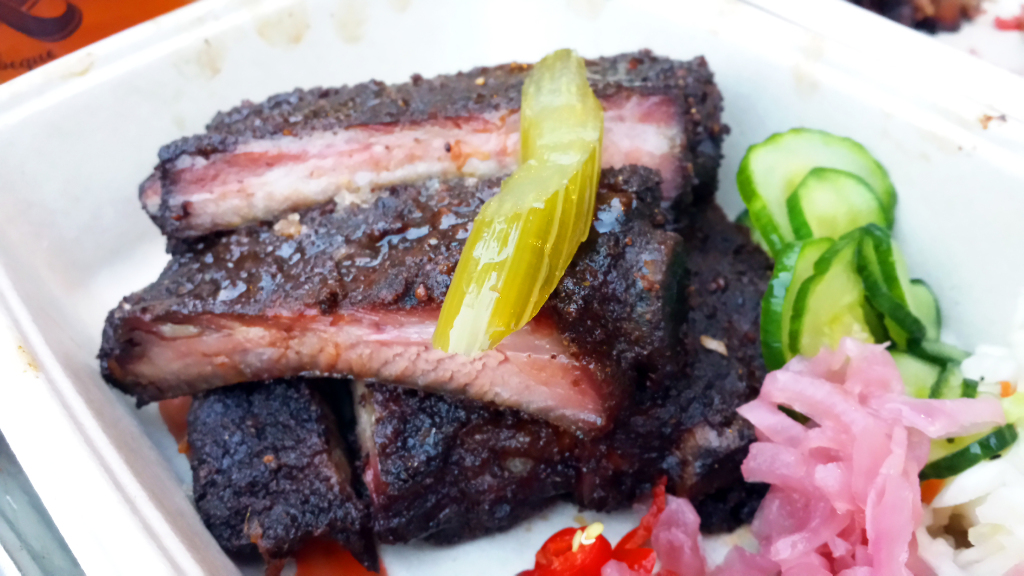
St. Louis
St. Louis-style barbecue consists of mainly pork dishes, a staple of which is the pork steak, which is sliced from the shoulder of the pig. However another item unique to the St. Louis area is crispy snoot. This nose and cheek cut is prepared by removing the nostrils and cooking until crispy. Similar to pork rinds, these can be presented many ways, but the two most common are either (1) covered in sauce, on a sandwich, or (2) broken into pieces and dipped in sauce.
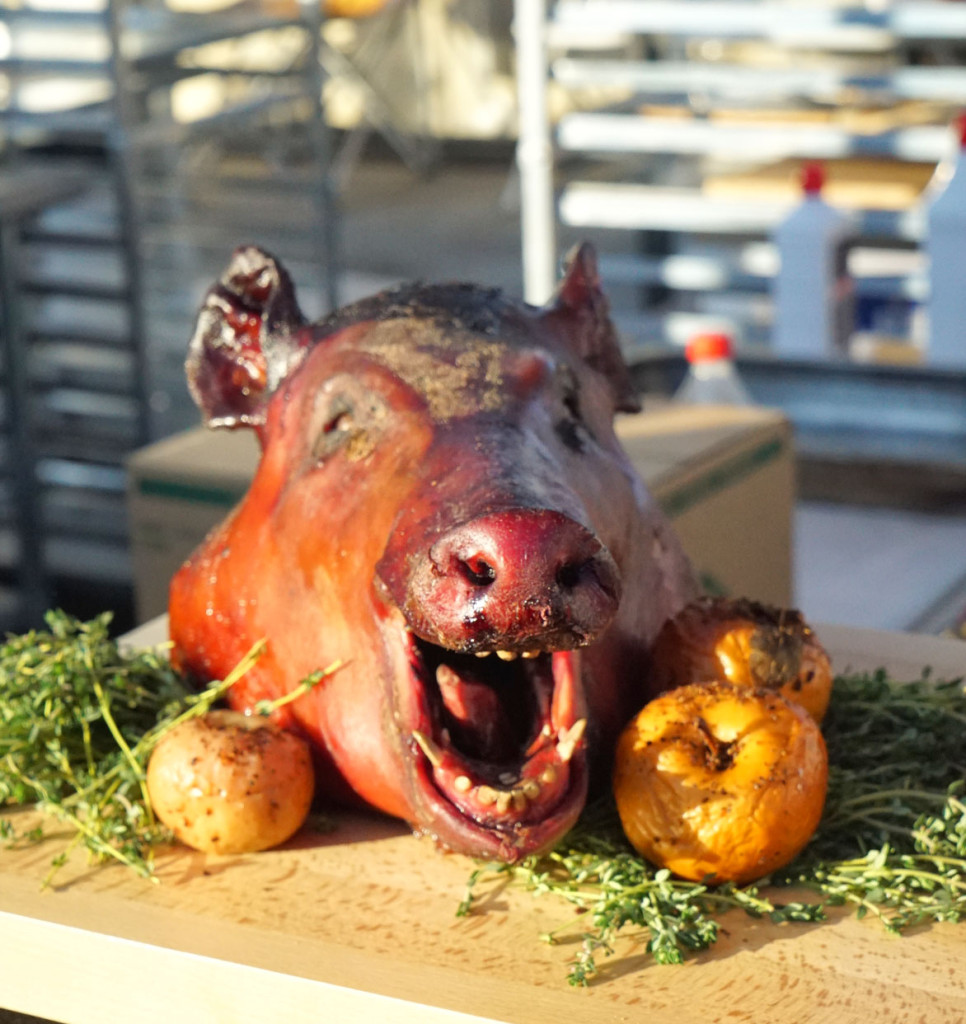
Memphis
Pulled pork and pork ribs are both big for this style of ‘cue. The dry rub is usually paprika and garlic, but served with a thin and tangy tomato-based sauce. Wet ribs are also prominent as well. Hickory is the choice wood, although oak, cherry, pecan and apple are all used.
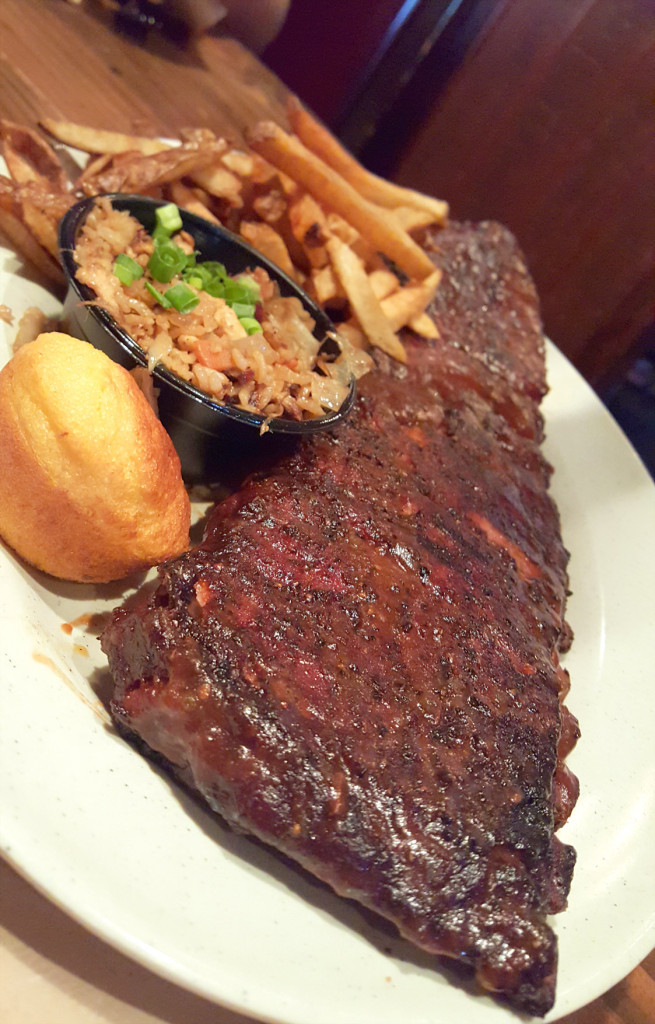
Alabama
Alabama tends to be a mixture of Texas and Carolina styles, but they’re big on sandwiches and cole slaw. They usually go with pulled pork or pulled chicken, but ‘Bama’s signature is the white sauce that they use as a topper, which is a mayonnaise and vinegar concoction.
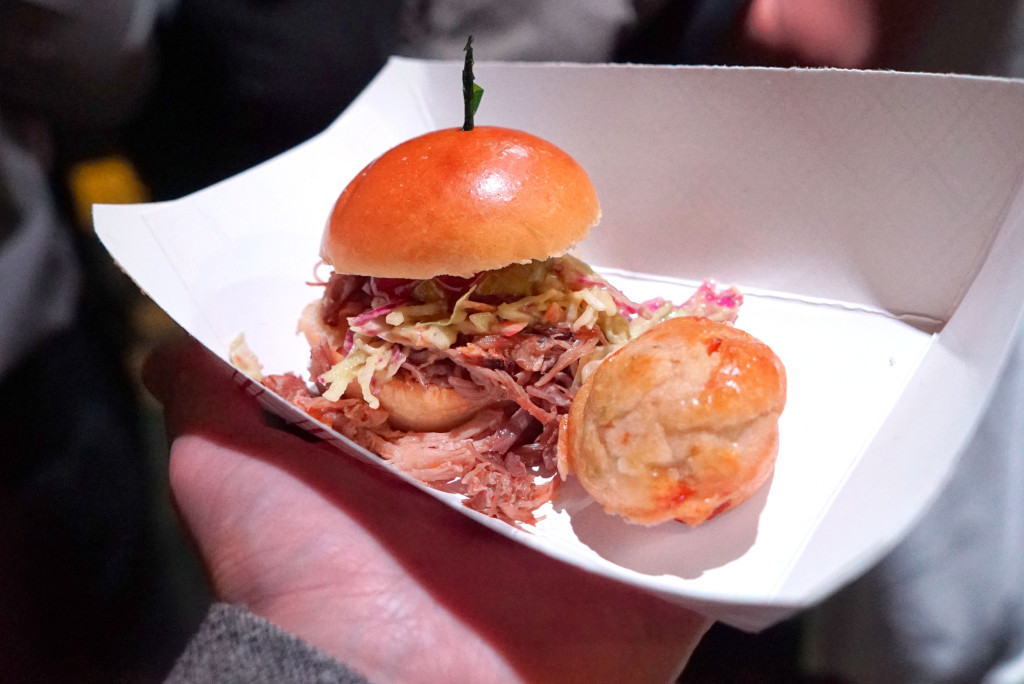
Kentucky
The thing to know about Kentucky BBQ is their use of mutton: older lamb and sheep. Don’t think of the word “old” as a bad thing. Lamb comes from a sheep that is less than one year old. Mutton comes from a sheep that is more than one year “old.” Kentucky mutton usually comes with a Worcestershire dip as well. Pork is prevalent here as well, but the mutton is what makes this region unique.
Virginia
I’m bogarting this description right from Wikipedia, since it is absolutely fascinating and I have nothing of my own to add to it: “While less prevalent than the other Southern styles, Virginia barbecue is a fair mixture of Carolina and Memphis barbecue. Originating in Hanover, Virginia in the 19th century, the traditional meat is pork (often Virginia ham) or chicken, although more gamy meals contain venison or squirrel. Unlike Carolina barbecue, the texture of meat is sweeter and finer. However, it does contain the smoky blend of Memphis barbecue. During Thomas Jefferson’s tenure as ambassador to France from 1784-89, he engaged in lengthy letter correspondence with James Madison regarding the preferred game for Virginia barbecue. While Jefferson exhibited a general preference for venison, Madison insisted that smaller critters were more consistent with the smokey flavor of the sauce. The key ingredients of Virginia barbecue are bourbon/wine, vinegar, peppers, corn, and a tomato-based sauce.”
California
I’ve decided to pull this directly from Wikipedia as well, since I never knew California had an official style of BBQ: “The original use of buried cooking in barbecue pits in North America was done by the Native Americans for thousands of years, including by the tribes of California. In the late 18th and early 19th centuries eras, when the territory became Spanish Las Californias and then Mexican Alta California, the Missions and ranchos of California had large cattle herds for hides and tallow use and export. At the end of the culling and leather tanning season large pit barbecues cooked the remaining meat. In the early days of California statehood after 1850 the Californios continued the outdoor cooking tradition for fiestas. In California a well-known barbecue dish is grilled tri-tip beef rump, sometimes cut into steaks. The Santa Maria Style BBQ, originally from the Central Coast of California, uses a portable ‘towed’ trailer version frequently seen at farmers markets. The old Mexican Ranchos of California would cook tri-tip over a pit of red oak, and simply season it with salt and garlic to enhance the flavor. It was served with pinqinto beans, pico de gallo and tortillas.”
Hawaii
Often overlooked is the luau, a polynesian tradition and celebration where whole hog is cooked. The centerpiece of any luau is kalua pork, which is a whole pig that is roasted in an imu pit – an underground oven traditionally made with lava rock – that cooks the animal for several hours, low and slow. The pig is ceremonially wrapped in banana leaves to impart sweetness and lock in moisture before being placed onto the coals.
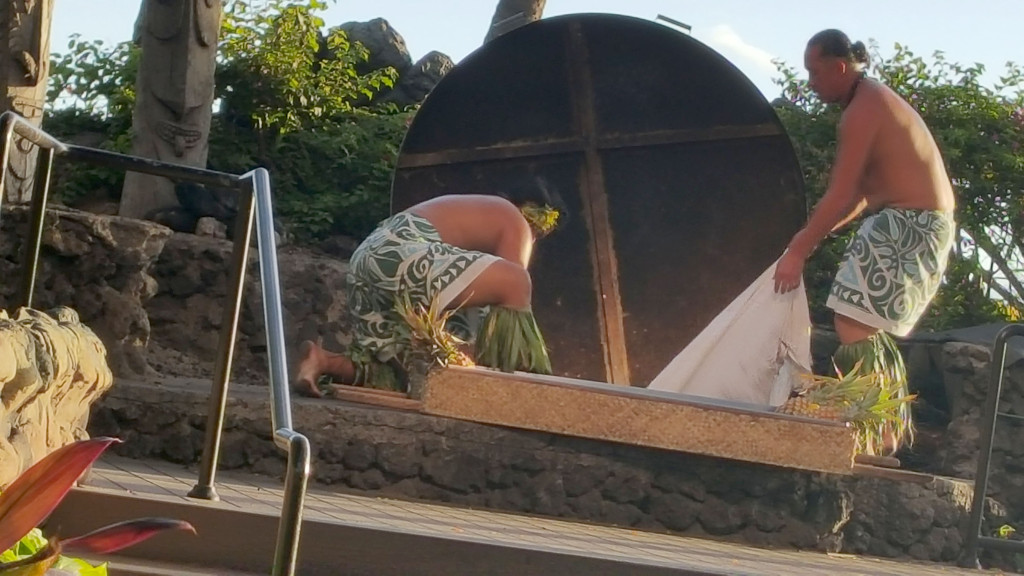
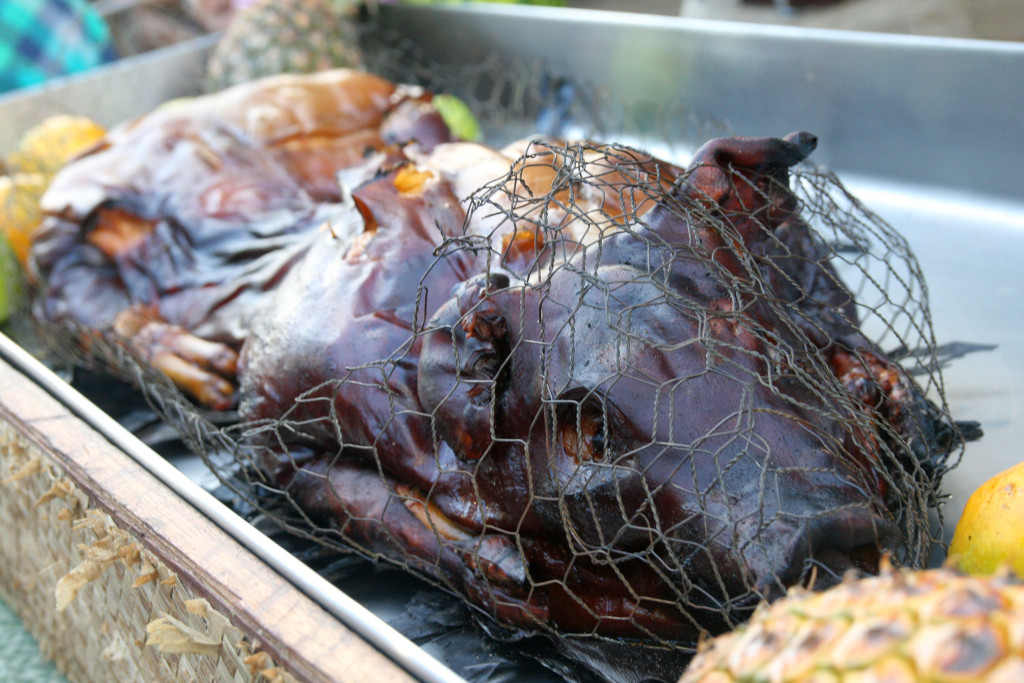
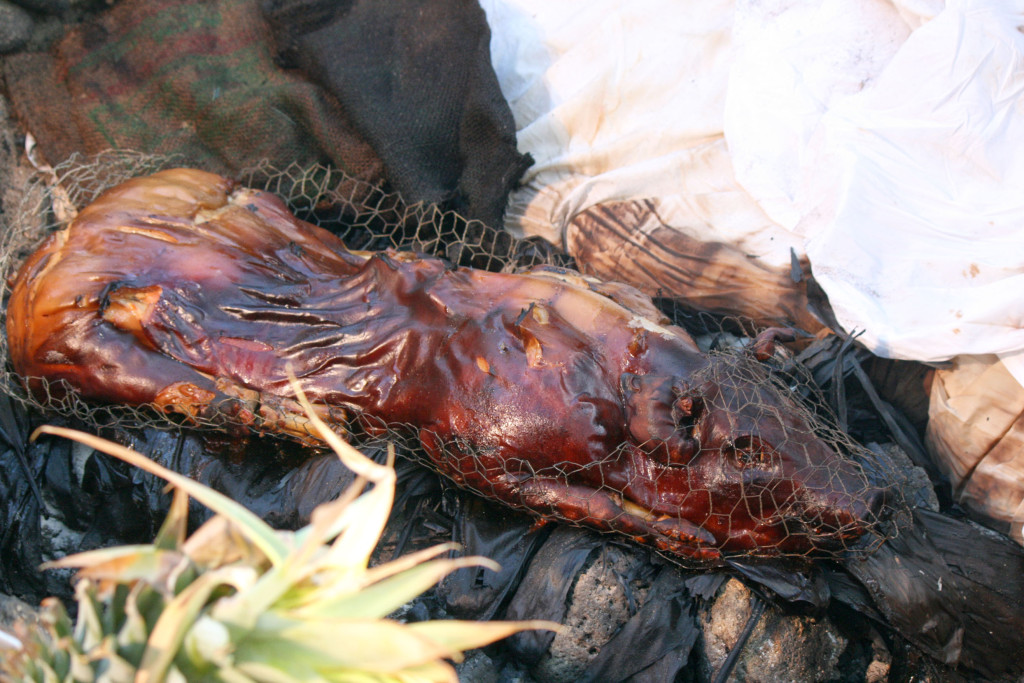
Hybrid Styles
Many other states, like Oklahoma, Arkansas and Georgia, are essentially hybrid forms of BBQ that exhibit techniques and flavors from the surrounding geographic areas of influence. New York City, on the other hand, is beginning to develop its own unique cultural hybrid BBQ style, as various African, Asian and Latin American immigrant communities weave the flavor profiles from their heritages into the American culinary tablecloth, so to speak. A true melting pot in every sense of the phrase, New York City has outlets for the flavors of African braai, Korean kimchi, Indian curry, Middle-Eastern cumin, Mexican mole and Brazilian churrasco/rodizio, just to name a few. In time, I see NYC as being a place where the boundaries of BBQ are expanded to a global level, as New Yorkers currently seem to be taking BBQ – something uniquely American – and applying it to various cuisines from all over the world. When that happens, everyone wins. Especially my stomach.
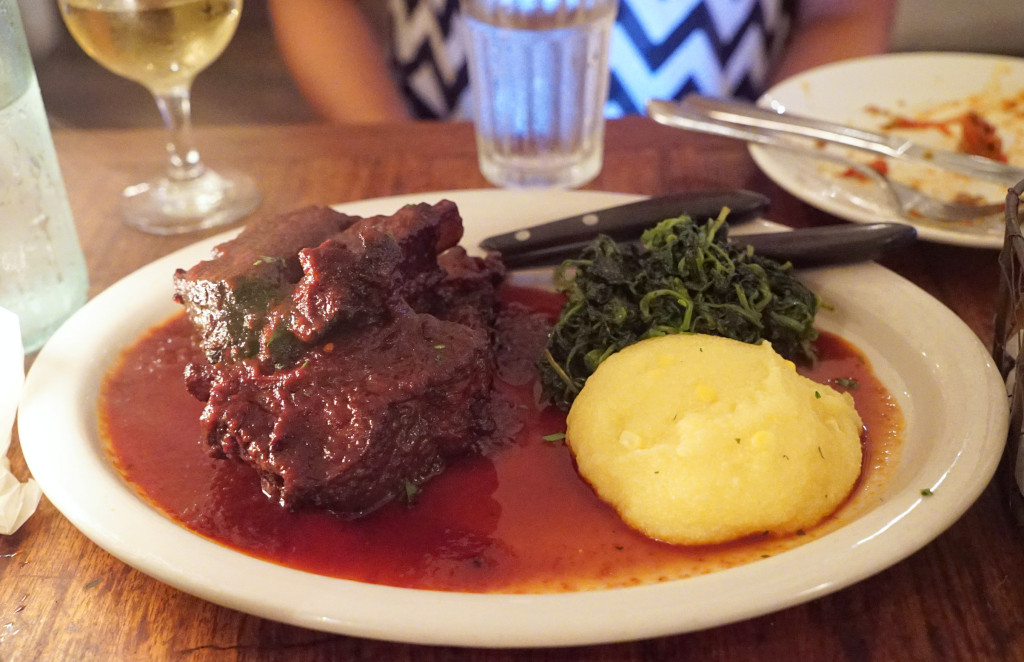
I realize that many BBQ aficionados might find my overview above to be a bit rudimentary. There’s so much more to know, and not even just about the meats. One could easily spend an entire day learning about the various side items that go along with American BBQ, for example. As a matter of fact, one of the most thorough and enjoyable resources I have come across for BBQ is a book called Be The BBQ Pitmaster, by Will Budiaman. This book is good for history, detailed discussions of the various regional techniques, tips for wood selection, smoking instructions, and even recipes from well known pit masters in each region. It’s a one-stop-shop for all your BBQ research and cooking application needs.
And if you are wondering what wines to pair with your BBQ, check out THIS ARTICLE by Bro BBQ.
Lastly, to see my small but growing collection of BBQ reviews, click on over to “The ‘Cue Review” now.
